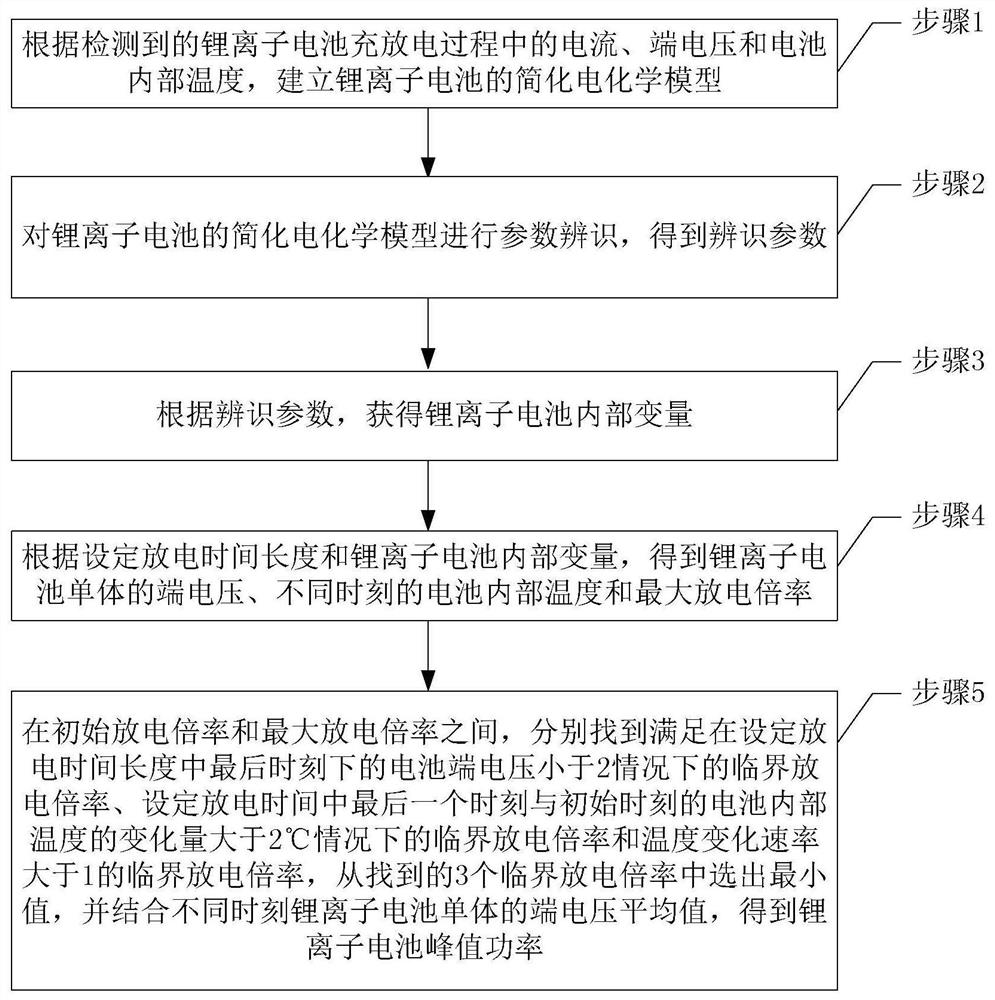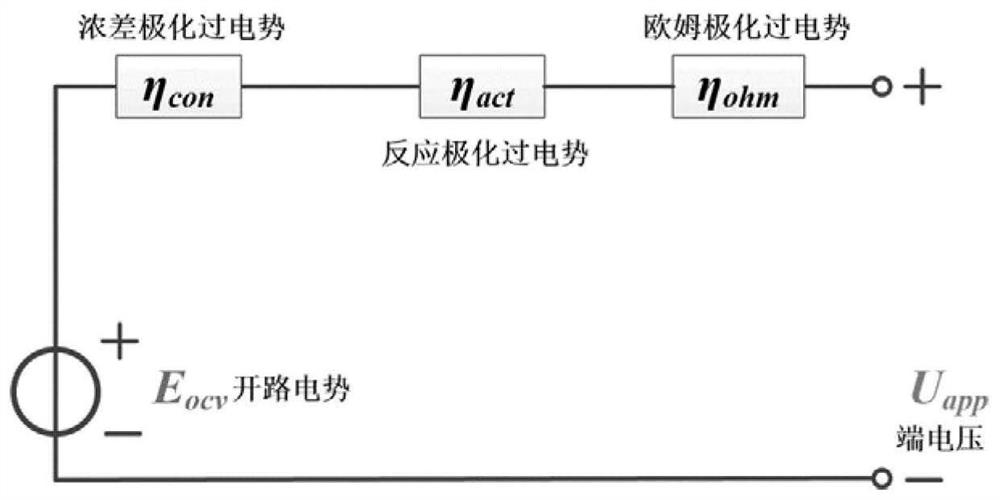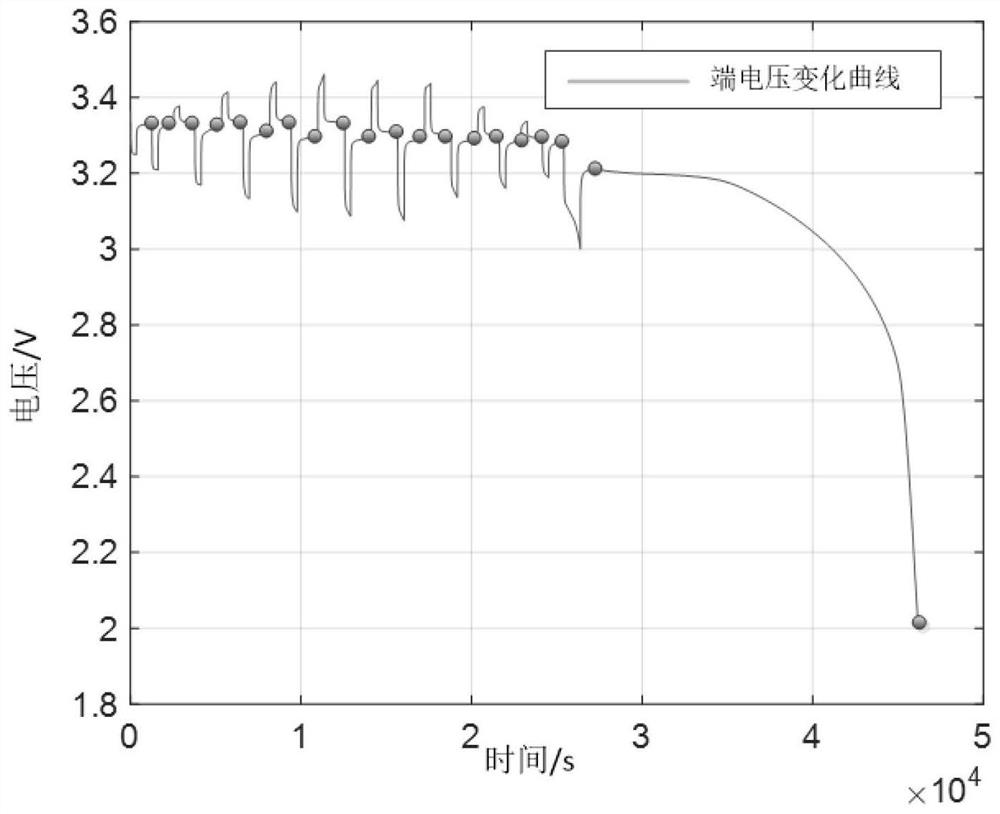Lithium ion battery peak power prediction method considering heat effect influence
A lithium-ion battery, peak power technology, applied in the direction of measuring electricity, measuring devices, measuring electrical variables, etc., can solve problems such as inaccurate peak power
- Summary
- Abstract
- Description
- Claims
- Application Information
AI Technical Summary
Problems solved by technology
Method used
Image
Examples
specific Embodiment approach 1
[0099] Specific implementation mode one: refer to figure 1 and figure 2 Specifically illustrate this embodiment, the method for predicting the peak power of a lithium-ion battery considering the influence of thermal effects described in this embodiment, the method includes the following steps:
[0100] Step 1. Establish a simplified electrochemical model of the lithium-ion battery according to the detected current, terminal voltage and internal temperature of the battery during charging and discharging of the lithium-ion battery;
[0101] Step 2, performing parameter identification on the simplified electrochemical model of the lithium-ion battery to obtain identification parameters;
[0102] Step 3. Obtain the internal variables of the lithium-ion battery according to the identification parameters;
[0103] Step 4. According to the set discharge time length and the internal variables of the lithium-ion battery, the terminal voltage of the lithium-ion battery cell, the inte...
specific Embodiment approach 2
[0105] Specific embodiment 2: This embodiment is a further description of the lithium-ion battery peak power prediction method considering the thermal effect described in specific embodiment 1. In this embodiment, in step 1, the simplified electrochemical model of the lithium-ion battery is :
[0106]
[0107] In the formula, U app is the terminal voltage of the lithium-ion battery, U p and U n are the positive and negative open circuit potentials, respectively, y surf and x surf are the lithium ion concentration on the solid phase surface of the positive and negative electrodes, R is the ideal gas constant, F is the Faraday constant, T is the internal temperature of the lithium ion battery, c 0 is the initial lithium ion concentration in the electrolyte, m p and m n is an intermediate variable, Δc 1 and Δc 2 is the lithium ion concentration at the positive and negative current collectors relative to the initial lithium ion concentration c in the electrolyte 0 The ...
specific Embodiment approach 3
[0108] Embodiment 3: This embodiment is to further explain the method for predicting the peak power of a lithium-ion battery considering the influence of thermal effects described in Embodiment 2. In step 2, the identification parameters specifically include:
[0109] Battery state of charge:
[0110]
[0111] In the formula, soc(t) is the state of charge of the battery at time t, I is the external current, Q all is the discharge capacity of the single battery;
[0112] Battery open circuit voltage:
[0113] E. ocv =U p [y 0 +D y (1-soc)]-U n [x 0 -D x (1-soc)] Formula 3,
[0114] In the formula, E ocv is the open circuit voltage of the battery, U p is the positive open circuit potential curve, U n is the negative open circuit potential curve; D y is the variation range of the amount of lithium intercalated in the positive electrode, D x is the variation range of the amount of lithium intercalated in the negative electrode, y 0 is the initial lithium intercal...
PUM
 Login to View More
Login to View More Abstract
Description
Claims
Application Information
 Login to View More
Login to View More - R&D
- Intellectual Property
- Life Sciences
- Materials
- Tech Scout
- Unparalleled Data Quality
- Higher Quality Content
- 60% Fewer Hallucinations
Browse by: Latest US Patents, China's latest patents, Technical Efficacy Thesaurus, Application Domain, Technology Topic, Popular Technical Reports.
© 2025 PatSnap. All rights reserved.Legal|Privacy policy|Modern Slavery Act Transparency Statement|Sitemap|About US| Contact US: help@patsnap.com



